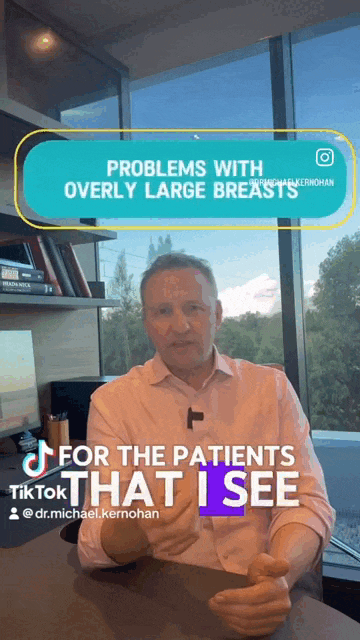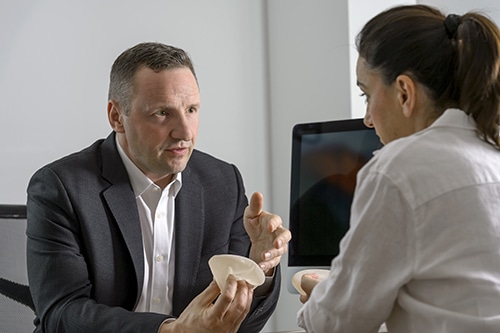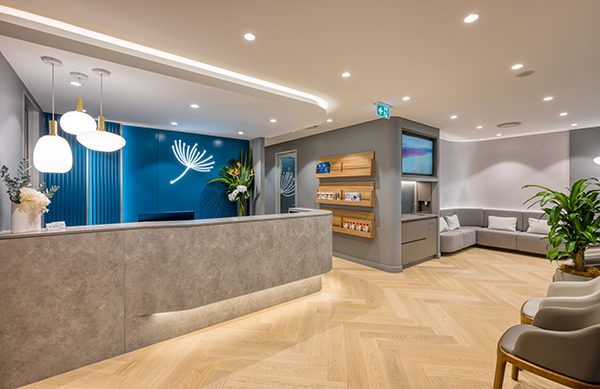Minimising and Managing Breast Reduction Scars
- Are you thinking about getting a breast reduction surgery?
- Interested to find out more about where the scars are located?
- Do you want to know the details of the healing process after breast reduction surgery?
Breast reduction surgery is a procedure that women undergo to reduce the size of their breasts. The surgery is associated with several benefits, such as reduced discomfort caused by overly large breasts, but leaves behind scars. In this blog, we will discuss the common reasons for breast reduction surgery, how scars look after breast reduction, the healing process, and various factors that affect scar healing and appearance. Additionally, we’ll provide tips for minimising breast reduction scars, as well as post-surgery care and medical treatments for optimal scar management.
Sydney Specialist Plastic Surgeon Dr Michael Kernohan is committed to helping his patients get optimal results with breast reduction surgery and other breast procedures. Dr Kernohan uses different surgical techniques and technologies to ensure a high level of safety and patient satisfaction.
Take the Quiz
Common Reasons to Undergo Breast Reduction Surgery
There are several reasons why women choose to undergo breast reduction surgery. Some of the most common reasons include:
- Physical discomfort: Overly large breasts can cause significant physical discomfort, such as back, neck, and shoulder pain. This discomfort can make daily activities, exercise, and even sleep difficult. Breast reduction surgery can alleviate this pain by reducing the weight of the breasts
- Restricted mobility: Large breasts can make it challenging to engage in certain physical activities, such as running or participating in sports. Breast reduction surgery can improve mobility and make it easier to participate in a wider range of activities
- Skin irritation and rashes: The weight and size of large breasts can cause skin irritation and rashes underneath the breast fold. By reducing the size of the breasts, this irritation can be minimised or eliminated
Understanding Scars after Breast Reduction
Scars are a natural part of the healing process after any surgery, and breast reduction is no exception. The appearance of scars after breast reduction will depend on several factors, such as the surgical technique used, your skin type, and how well you care for your incisions during the healing process.
There are different types of incisions used during breast reduction surgery, which can result in different scar patterns. Some common incisions are:
- Anchor incision: This incision pattern involves an incision around the areola, a vertical incision from the areola down to the breast crease, and a horizontal incision along the breast crease. This is the most common incision pattern for breast reduction surgery and can result in the most visible scarring
- Vertical incision: Also known as a “lollipop” incision, this pattern involves an incision around the areola and a vertical incision from the areola down to the breast crease. This incision pattern may result in less visible scarring than the anchor incision
- Circumareolar incision: This incision pattern involves an incision around the entire areola. This technique may be used for smaller breast reductions and can result in the least visible scarring
It’s important to remember that scars will appear red and raised at first, but they will gradually fade and flatten over time. With proper care and management, most scars after breast reduction surgery will become less noticeable over time.
The Cicatrisation (Healing) Process After Breast Reduction
The cicatrisation process, or the process of scar formation, occurs in several stages after breast reduction surgery. Understanding these stages can help you better manage your scars and promote optimal healing.
- Hemostasis stage
The first stage of wound healing is the process of hemostasis, which involves the body’s natural response to injury to stop bleeding. During this stage, platelets form a plug to stop bleeding, and blood vessels in the area narrow to slow down blood flow.
- Inflammatory stage
This stage can last for several days. During this stage, your body’s immune system is working to clean and protect the wound. You may experience inflammation, redness, and pain around the incision site.
- Proliferative stage
This stage occurs several days to weeks after surgery and involves the formation of new blood vessels and collagen, which helps to strengthen the wound. During this stage, the scar may appear red, raised, and firm.
- Remodelling stage
This is the final stage of the cicatrisation process and can last for several months to years. During this stage, the scar will gradually fade, flatten, and become less noticeable. However, it’s essential to remember that scars will never completely disappear, and their final appearance will depend on various factors.
Click to Download Dr Michael Kernohan’s Breast Reduction Surgery Guide
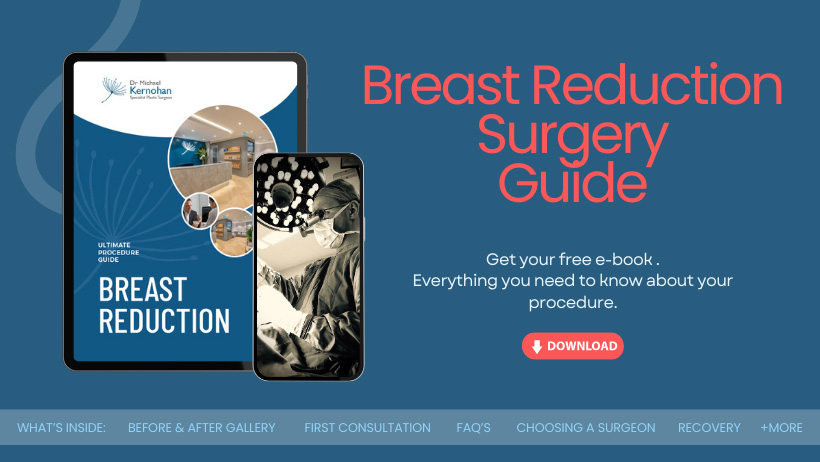
Factors Affecting Scar Healing And Appearance
Several factors can affect the healing and appearance of scars after breast reduction surgery. Some of these factors include:
- Genetics: Your genetic makeup can play a significant role in how your scars heal and appear. Some individuals are more prone to keloid or hypertrophic scarring, which can result in raised, thick, and sometimes painful scars
- Skin type and colour: Darker skin tones are more likely to develop hypertrophic or keloid scarring. Additionally, individuals with fair skin may be more prone to hyperpigmentation (darkening of the scar) or hypopigmentation (lightening of the scar)
- Age: As we age, our skin becomes less elastic and more prone to scarring. Older individuals may experience slower healing and more noticeable scarring after breast reduction surgery
- Surgical technique: The type of incision used during breast reduction surgery can impact the visibility and appearance of scars. Discussing the best surgical technique for your specific needs with your surgeon can help minimise visible scarring
- Post-surgery care: Proper post-surgery care is crucial for optimal scar healing and appearance. Following your surgeon’s instructions for wound care and avoiding activities that may strain the incision site can help promote better healing
Tips for Minimising Breast Reduction Scars
While it’s impossible to avoid scarring completely after breast reduction surgery, there are several tips you can follow to help minimise the appearance of your scars:
- Follow your surgeon’s instructions
Your surgeon will provide you with specific instructions for post-surgery care, such as keeping the incision site clean and dry, avoiding activities that may strain the incision site, and wearing a supportive bra. Following these instructions can help promote proper healing and minimise scarring.
- Avoid sun exposure

Sun exposure can cause scars to darken and become more noticeable. Protect your scars from the sun by wearing clothing that covers the incision site and applying sunscreen with a high SPF when you’re outside.
- Massage your scars
Gentle massage can help break down scar tissue and improve the appearance of scars. Once your incision has fully closed and your surgeon has given you the green light, you can begin massaging your scars with your fingertips, using a circular motion.
- Use silicone sheets or gels
Silicone sheets and gels have been shown to help improve the appearance of scars by keeping the scar tissue hydrated and promoting collagen production. Talk to your surgeon about whether silicone sheets or gels may be a good option for you.
- Stay healthy
Maintaining a healthy lifestyle, including proper nutrition and regular exercise, can help promote optimal healing and minimise scarring.
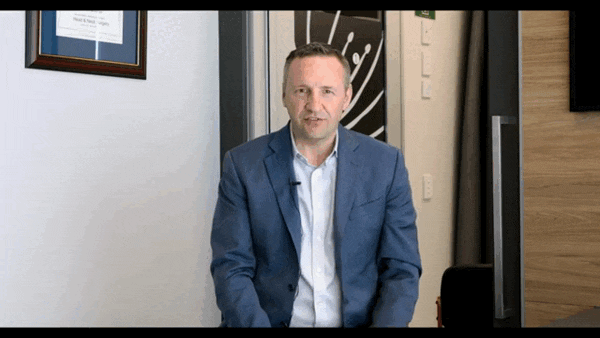

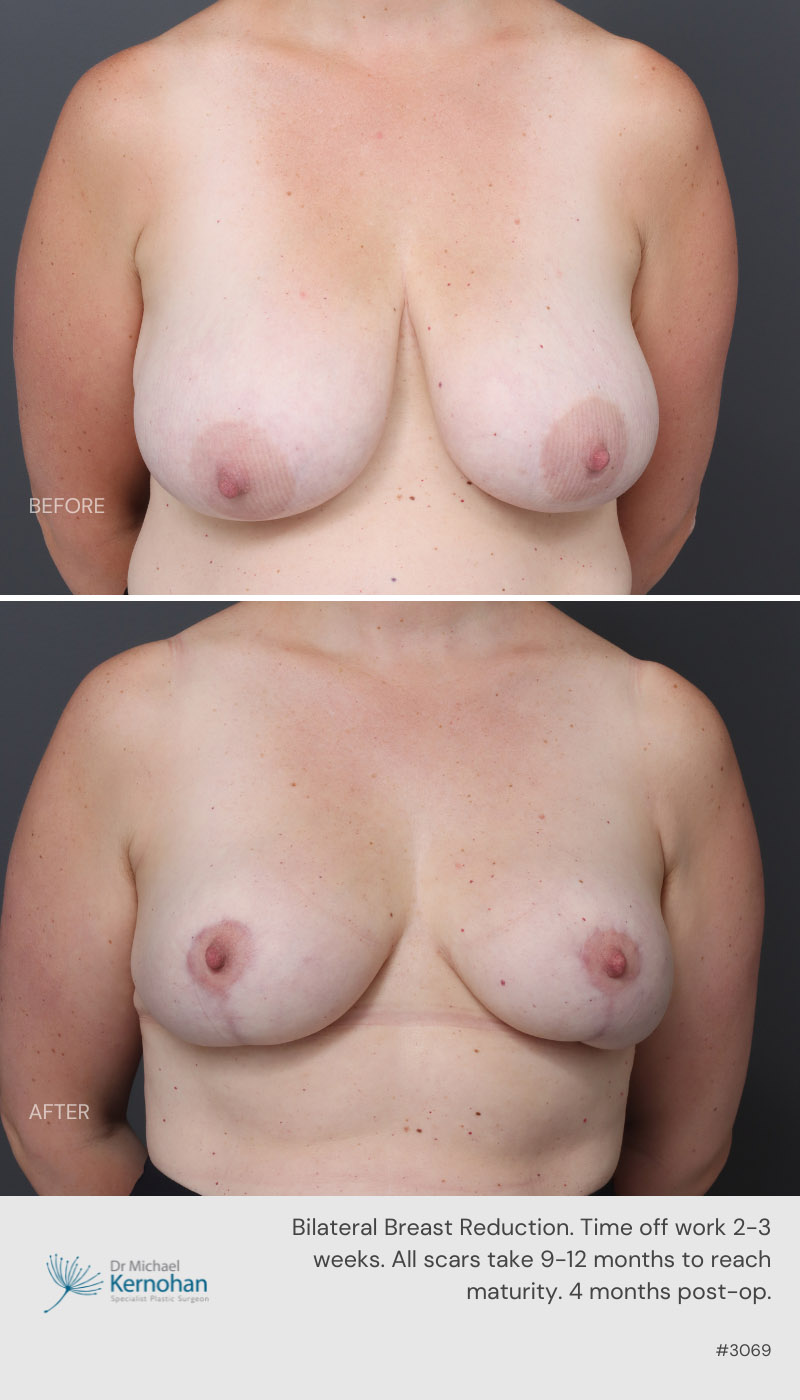

Post-Surgery Care For Optimal Scar Management
Post-surgery care is crucial for optimal scar management after breast reduction surgery. Here are some essential steps to follow during the healing process:
- Keep the incision site clean and dry: Follow your surgeon’s instructions for cleaning the incision site and keeping it dry. This may involve gently washing the area with soap and water, applying an antibiotic ointment, and changing the surgical dressings regularly
- Wear a supportive bra: Wearing a supportive bra can help reduce tension on the incision site and promote proper healing. Your surgeon will likely recommend a specific type of bra for you to wear during the healing process
- Avoid activities that may strain the incision site: During the initial stages of healing, it’s essential to avoid activities that may put strain on the incision site, such as heavy lifting, strenuous exercise, or sleeping on your stomach. Gradually resume normal activities as directed by your surgeon
- Monitor for signs of infection: While infection is rare after breast reduction surgery, it’s essential to be aware of the signs, such as increased redness, warmth, or pain around the incision site, fever, or pus discharge. If you notice any of these signs, contact your surgeon immediately
- Attend follow-up appointments: Your surgeon will schedule follow-up appointments to monitor your healing progress and ensure that your scars are healing properly. It’s essential to attend these appointments and discuss any concerns you may have with your surgeon
Medical Treatments For Breast Reduction Scars
If you don’t like the appearance of your scars after breast reduction surgery, there are several medical treatments available that may help improve their appearance. Some of these treatments include:
- Topical treatments: Prescription creams and gels containing ingredients such as silicone, corticosteroids, or vitamin E may be recommended by your surgeon to help improve the appearance of scars
- Steroid injections: If your scars are particularly thick or raised, your surgeon may recommend steroid injections. These injections can help reduce inflammation and flatten the scar tissue
- Laser therapy: Laser therapy uses intense light beams to break down scar tissue and promote collagen production. This treatment can help improve the appearance of scars and may be a good option for those with darker skin tones
- Surgical scar revision: In some cases, surgical scar revision may be recommended to improve the appearance of scars. This involves removing the existing scar tissue and creating a new incision that is more discreet
- Microneedling: Microneedling involves using a device with small needles to create tiny punctures in the skin. This can help promote collagen production and improve the appearance of scars
It’s important to discuss these medical treatments with your surgeon and weigh the potential risks and benefits before proceeding with any treatment.
Long-Term Scar Management And Maintenance
While scars after breast reduction surgery will gradually fade and become less noticeable over time, it’s important to continue caring for your scars to reduce their appearance. Here are some tips for long-term scar management:
- Protect your scars from the sun: Even after your scars have fully healed, it’s important to protect them from the sun to prevent darkening and discolouration. Wear clothing that covers the incision site and apply sunscreen with a high SPF when you’re outside
- Moisturise your scars: Keeping your scars moisturised can help prevent them from becoming dry and itchy. Use a gentle moisturiser or a silicone scar sheet to keep your scars hydrated
- Massage your scars regularly: Regular scar massage can help break down scar tissue and improve the appearance of scars. Use your fingertips to massage your scars in a circular motion
- Stay healthy: Maintaining a healthy lifestyle, including proper nutrition and regular exercise, can help promote optimal healing
- Consider scar camouflage: If you’re still unhappy with the appearance of your scars after breast reduction surgery, scar camouflage may be an option. This involves using makeup or tattooing to help disguise the scars
When to Consult A Surgeon About Your Breast Reduction Scars
While most scars after breast reduction surgery will gradually fade and become less noticeable over time, it’s important to keep an eye on your scars and consult your surgeon if you notice any concerning changes. Here are some signs that you should contact your surgeon about your breast reduction scars:
- Excessive pain or discomfort: While some discomfort is normal during the healing process, excessive pain or discomfort may be a sign of a complication
- Redness, warmth, or pus discharge: These may be signs of an infection and should be addressed immediately
- Thick, raised, or discoloured scars: If your scars appear thicker, raised, or discoloured than they should be at your stage of healing, it’s important to consult your surgeon
- Changes in sensation: If you experience numbness or tingling around the incision site, or if you notice any changes in sensation, such as increased sensitivity or decreased feeling, contact your surgeon
- Unusual swelling or fluid accumulation: If you notice any unusual swelling or fluid accumulation around the incision site, contact your surgeon

FAQs about Breast Reduction Scars
What do healed breast reduction scars look like?
- Healed breast reduction scars can vary in appearance depending on the individual and the extent of the surgery. The scars typically begin as red or pink lines and gradually fade over time to a lighter colour. Scars may also be raised or slightly indented, but should not be painful or itchy. Your surgeon can provide specific information about the expected appearance of your scars and how to care for them during the healing process.
Do breasts look normal after reduction?
- Breasts can look normal and natural after a breast reduction surgery, especially when performed by an experienced and skilled plastic surgeon. During the surgery, the breasts are reshaped and resized to create a more balanced and proportional appearance. While there may be some scarring, most patients are able to achieve a significant improvement in the appearance and comfort of their breasts.
Will my nipples look different after breast reduction?
- Nipple position and appearance may be altered during a breast reduction surgery, but the goal is to create a natural and proportional appearance. In some cases, the nipples may need to be repositioned higher on the breast mound, which can cause some temporary changes in sensation or appearance. Your surgeon can discuss the potential impact on your nipples and provide specific guidance on how to care for them during the recovery process.
When do scars look their worst?
- Scars typically look their worst during the initial healing phase, which can last several weeks to several months. During this time, scars may appear red, raised, and slightly swollen. Over time, the scars will fade and flatten as the healing process continues. Proper scar care, including keeping the incision sites clean and moisturised, can help minimise their appearance.
Further Reading about Breast Reduction Surgery with Dr Kernohan
- Read Dr Kernohan’s Breast Reduction Surgery Page
- Read Dr Kernohan’s Blog about Can Your Breasts Grow Back After Breast Reduction Surgery?
- Read Dr Kernohan’s Blog about Recovery after Breast Reduction
- Read Dr Kernohan’s Blog about Solutions for Saggy Breasts – Augmentation, Lift or Reduction
- Read Dr Kernohan’s Recovery after Surgery Page
- Read Dr Kernohan’s Blog about Tips for Sleeping After Breast Reduction Surgery
- Dr Kernohan’s Blog about Will Medicare Cover Breast Reduction Surgery in Sydney?


